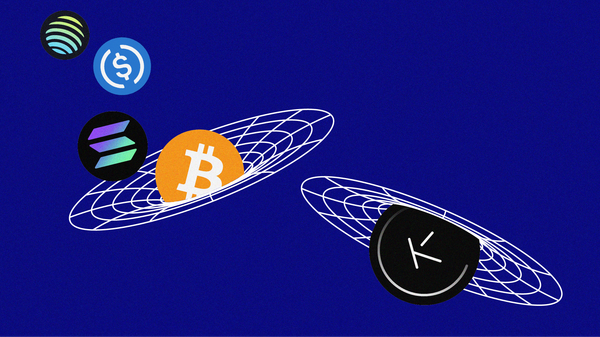The Emergence of Semi-Fungible Tokens
Does the "404" in ERC-404 point to funds not found after investing or the absence of reliable fractionalization for NFTs?
As time goes on and the permissionless development landscape evolves, the emergence of new experimental token standards aiming to optimize how we interact with certain asset types are a common sight. For the most part these seemingly innovative concepts don’t garner a lot of attention or use, however from time to time the market graces us with something worthy of forming a narrative around.
Introduction
Despite crypto markets picking up significant volume compared to 2022 lows, NFTs on the other hand are struggling to gain momentum.
With the introduction of marketplaces such as Sudoswap and Blur, trading NFTs is easier and more liquid than ever. The infrastructure is there, yet total volume is still nowhere near the glory days, so what’s the issue? Stagnation of unique participants. The collectibles as they are right now, by design, have some limitations when it comes to attracting a larger audience and garnering consistent trading volume.
wide spreads & high volatility;
even collections valued well over $350m have noticeable bid-ask spreads as the market is not that efficient and liquidity is not always readily available
high barrier of entry due to lack of fractionalization;
sought after collections often times come with a hefty price tag, discouraging investors with lesser capital from participating since only whole NFTs can be exchanged — out of the ten most traded collections available on Blur, only two have a floor price lower than 1 ETH
To combat some of these drawbacks and make NFTs more accessible, attempts at fractionalizing NFTs have been made, but with no overwhelming success due to potential legal complications and counterparty risks from operators providing this service.
Today’s topic, an unofficial hybrid token standard dubbed as “ERC-404”, explores an alternative approach to interacting with NFTs that might have the potential to improve some concerns associated with the market.
Fundamental Analysis
By fusing together fungible (ERC-20) and non-fungible (ERC-721) tokens, the developers of this concept aim to bring forth a token type that provides the best of both worlds, while retaining the core values of NFTs.
How does this idea work? How can a token be fungible and non-fungible at once? This of course is a bit misleading, in reality there are two tokens with transitory balances. The tokens are pegged in a manner that one whole ERC-20 token entitles the holder to one ERC-721 token (NFT) and vice versa.
ERC-721balance = [ ERC-20balance ]
The ERC-721 balance is always equal to the rounded down balance of the ERC-20 token (e.g. 0.9 ERC-20 = 0.0 ERC-721; 3.3 ERC-20 = 3.0 ERC-721).
Something to keep in mind when transferring tokens is that whenever one of the balances changes, the other is subsequently changed as well.
Concerns & Considerations
This concept does not come without it’s faults as it is still in the early stages of development and not properly audited.
ERC-20 transfer interactions;
every ERC-20 token is transferred, the unique NFT attached to it gets burned and is replaced by a new, random one — meaning that being careless could end up costing a rare collectible
- issues with IDs;
constant burning and minting of NFTs with token transfers can cause the newly appointed IDs point to invalid metadata (any media embedded into the NFT) hosted on IPFS in case they exceed the total supply since the metadata file name contains the ID - gas fees;
the smart contracts aren’t well optimized and might be expensive to interact with on Ethereum Mainnet
As ERC-404 is still an untested concept that hasn’t undergone an extensive and thorough audit, caution should be taken when interacting with it since there might be more critical issues waiting to be unearthed.
Benefits & Potential
The token type’s innate properties provide various benefits, making it versatile and flexible for the end user.
- (native) liquidity;
in case you can’t find a buyer/seller on a traditional marketplace, decentralized exchanges are a viable option - (native) fractionalization;
speculators can buy a fraction of a token instead of the entire thing, greatly lowering the barrier of entry and offering an alternative to getting exposure to a project through sweeping the floor - community initiative;
countless developers and independent auditors have shown interest towards this novel idea and are doing their part to discuss potential improvements and spot vulnerabilities
As of writing this article, some security and efficiency concerns are actively being addressed and worked on.
Use Cases & Integrations
The first protocol to implement ERC-404 was Pandora, attracting the interest of many speculators and key players in the space.
Ever since it was available for trading a mere two weeks ago, the token has consistently been traded at high volumes.
Expressing willingness to expand the ecosystem, Pandora has announced partnerships with various DeFi protocols to increase the usage of semi-fungible tokens. Some notable collaborations include:
- Aevo (Derivatives L2);
utilizing Pandora’s ERC-404 mechanics, Aevo unveiled their “farm boost” program that allows traders to boost their airdrop allocation - Binance (Centralized Exchange);
support for ERC-404 tokens was recently added to Binance’s Web3 wallet - Wasabi Protocol (NFT Perps & Options);
other than listing ERC-404 assets that can be traded with leverage, a terminal and a visualizer for the NFTs has also been added
In addition to Pandora, numerous ERC-404 projects have been deployed, some using a modified version of the original unofficial token standard.
Conclusion
The overall sentiment towards this concept is mixed and hard to accurately gauge. A lot of people see this as a fad and express disinterest whereas others are getting in on the narrative and waiting on new developments. From what we’ve seen so far, there’s a chance that some safer, reliable iteration of ERC-404 will be utilized more frequently in the future, as it opens up new avenues in a market that remains fairly stagnant in terms of progress.
Disclamer: The information provided is for general informational purposes only and does not constitute financial, investment, or legal advice. The content is based on sources believed to be reliable, but its accuracy, completeness, and timeliness cannot be guaranteed. Any reliance you place on the information in this document is at your own risk. On Chain Times may contain forward-looking statements that involve risks and uncertainties. Actual results may differ materially from those expressed or implied in such statements. The authors may or may not own positions in the assets or securities mentioned herein. They reserve the right to buy or sell any asset or security discussed at any time without notice. It is essential to consult with a qualified financial advisor or other professional to understand the risks and suitability of any investment decisions you may make. You are solely responsible for conducting your research and due diligence before making any investment choices. Past performance is not indicative of future results. The authors disclaim any liability for any direct, indirect, or consequential loss or damage arising from the use of this document or its content. By accessing On Chain Times, you agree to the terms of this disclaimer.





